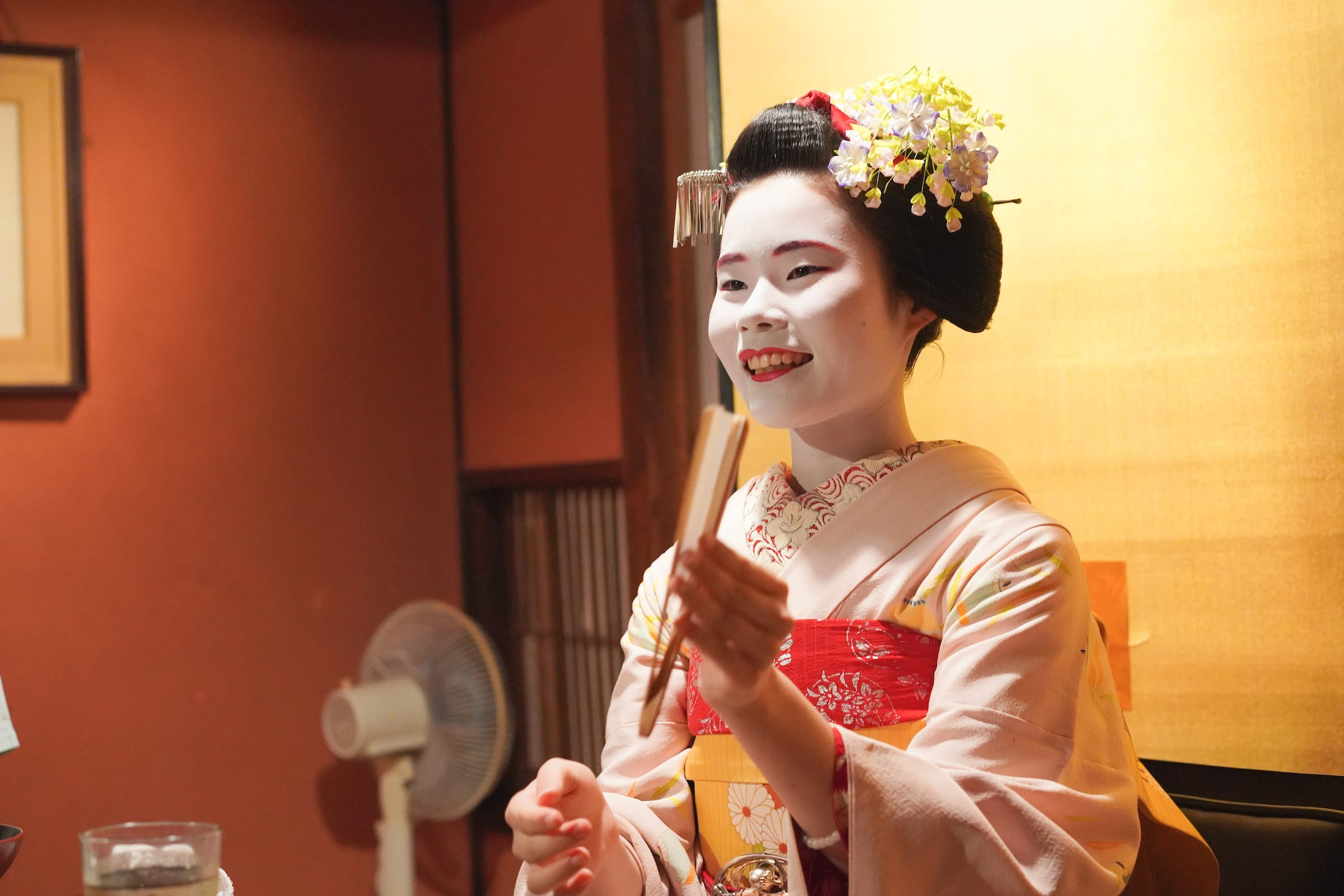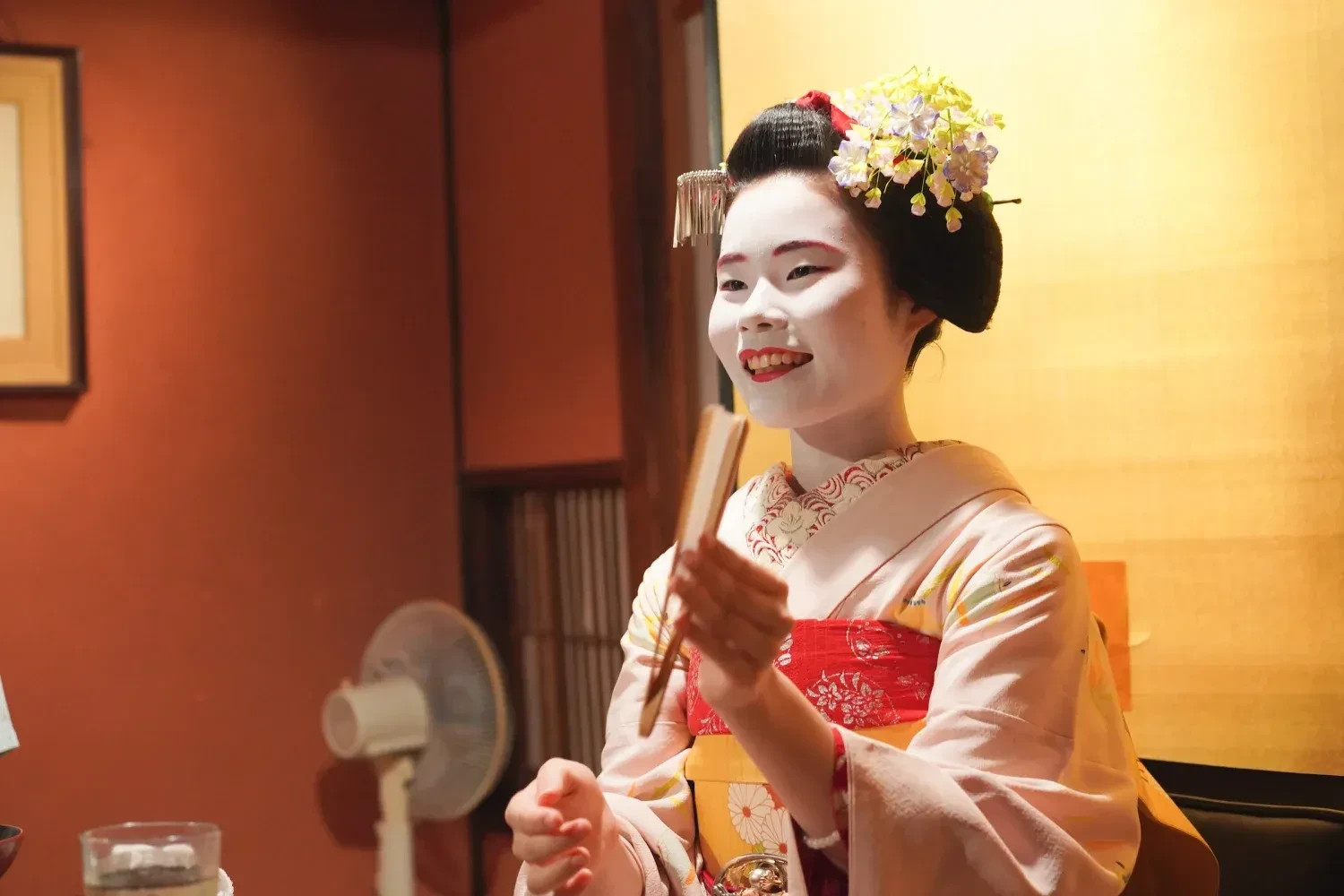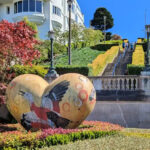Since its initial publication, our guide to Hanamikoji Street has become a trusted companion for countless visitors eager to explore this enchanting corner of Kyoto. Now, we’re thrilled to present an updated version, incorporating fresh discoveries from our recent explorations (August to October) and ensuring you have the most current information for your 2025 Kyoto adventure.
The allure of Kyoto’s traditional culture continues to captivate travelers, and Hanamikoji Street stands as a pivotal location to experience it firsthand. However, navigating Kyoto’s intricate streets and understanding their cultural significance can be challenging, especially for international visitors. This is why guided tours are gaining popularity, offering deeper insights and enriching experiences. Magical Trip, consistently ranked as a top tour provider on TripAdvisor, offers exceptional Kyoto tours to help you uncover the city’s hidden gems.
 Magical Trip's award-winning Kyoto tour
Magical Trip's award-winning Kyoto tour
For an unforgettable immersion into the heart of Hanamikoji, we highly recommend the “Dinner with Maiko in a Traditional Kyoto Style Restaurant Tour.” This exclusive experience offers a rare glimpse into Kyoto’s renowned geisha culture while indulging in a delectable dinner. Even for Japanese locals, encountering geisha culture is a special occasion, making this tour an extraordinary opportunity.
To truly maximize your Kyoto visit and delve into its captivating charm, consider joining one of our expertly curated Kyoto tours!
Discovering the Essence of Kyoto: Hanamikoji Street in Gion
Kyoto, a perennial favorite among Japan’s tourist destinations, holds an irresistible charm that beckons visitors to return time and again. This allure stems from its refined atmosphere and the quintessential Japanese streetscapes that whisper tales of centuries past.
For over a millennium, from 794 until 1869 when Emperor Meiji relocated the capital to Tokyo, Kyoto reigned as Japan’s political and cultural nucleus. This extraordinary longevity as the nation’s heart has endowed Kyoto with an unparalleled historical depth. Across eras, Kyoto has meticulously preserved a wealth of shrines, temples, and architectural marvels that vividly narrate Japan’s rich history. Beyond grand monuments, the city is also dotted with tranquil corners that embody Japan’s subtle and profound beauty.
To truly grasp the essence of Kyoto, look no further than Hanamikoji Street. This iconic street, nestled in the heart of Gion, is the focus of our comprehensive guide.
For an exclusive cultural experience, don’t miss the opportunity to experience a traditional Kyoto dinner with a Maiko through MagicalTrip. Spaces are limited for this unique and intimate encounter, so we recommend booking well in advance!
[Dinner with Maiko in a traditional Kyoto style restaurant Tour
Journey into mysterious world of Maiko in Gion, Kyoto. In this tour, you can enjoyaiko
MagicalTrip
 Dinner with Maiko Tour
Dinner with Maiko Tour
If you’re seeking a complete overview of Kyoto, our in-depth Kyoto Guide is an excellent resource. It provides a detailed exploration of Kyoto’s diverse areas and how to make the most of your visit.
[The Ultimate Kyoto Guide for Foreign Visitors
This comprehensive guide offers an insider’s perspective on Kyoto’s top attractions, seasonal highlights, and local insights to help you fully experience the city’s charm.
Magical Trip MediaTakashi Nakadomari
What Makes Hanamikoji Street Special? The Heart of Gion Explained
Kyoto’s city grid is predominantly oriented north-south and east-west. Hanamikoji Street is a key north-south axis, stretching approximately 1 kilometer through Gion, Kyoto’s most celebrated entertainment district.
Despite being called a “koji” (typically meaning a narrow lane), Hanamikoji Street is surprisingly spacious, inviting leisurely exploration. Its atmospheric stone paving and the continuous rows of traditional “machiya” townhouses create an ambiance of refined elegance and old-world charm. For centuries, this area has been the heart of Kyoto’s geisha district, home to numerous “ochaya” (teahouses) where maiko and geiko entertain guests, further enhancing its sophisticated and exclusive character.
The name “Hanamikoji,” translating to “flower-viewing lane,” is inspired by the cherry trees that once lined the street, forming a breathtaking tunnel of blossoms each spring. Even today, springtime visitors are rewarded with beautiful cherry blossoms adorning the street.
Unveiling the Charms of Hanamikoji Street: Why Tourists Flock Here
A Step Back in Time: Kyoto’s Preserved Historical Streetscape
Traditional Kyoto Streetscape on Hanamikoji Street
Source: Rurubu Kids
The southern Gion area, encompassing Hanamikoji Street, holds the prestigious designation of a Historical Landscape Preservation and Improvement District. This designation ensures the meticulous upkeep of the area’s remarkable historical landscape, safeguarding not just the buildings but also the traditional way of life of its residents.
Walking along Hanamikoji Street is like stepping into a living museum. The architecture showcases traditional Japanese construction techniques, creating a streetscape that perfectly embodies the quintessential image of Kyoto. Scattered throughout the area are serene shrines and temples, adding a layer of solemn tranquility to the atmosphere.
While the northern section of Hanamikoji Street features a blend of modern restaurants and bars, the southern end, closer to Kennin-ji Temple, is where you’ll truly feel transported to old Kyoto. This historically rich streetscape invites visitors to immerse themselves in a serene and contemplative mood, far removed from the bustle of modern life.
Centuries of Tradition: Teahouses and Renowned Restaurants
Hanamikoji Street is renowned for its concentration of historic teahouses and long-established traditional restaurants. The architecture of these establishments themselves is a testament to Japanese heritage, incorporating building techniques passed down through generations. Look for distinctive features like fine vermilion latticework and gracefully arched hedges beneath the eaves – hallmarks of Hanamikoji’s sophisticated ambiance.
Many of these exclusive establishments adhere to the “ichigensan okotowari” policy, meaning they primarily cater to regular patrons and their invited guests, making them inaccessible to first-time visitors without an introduction. This exclusivity further contributes to Hanamikoji’s aura of refined Japanese tradition and sophisticated culture.
Kennin-ji Temple: A Historic Zen Temple at the Street’s Edge
Kennin-ji Temple at the end of Hanamikoji Street
Source: OZ mall
At the southern terminus of Hanamikoji Street stands Kennin-ji Temple, Kyoto’s oldest Zen temple. Founded in 1202, this temple boasts over 800 years of history, holding immense prestige and venerability. Historically, the area around Kennin-ji has been a hub for “ochaya” (teahouses), where maiko and geiko entertain guests with exquisite cuisine and sake. The presence of these teahouses around Kennin-ji amplifies the uniquely Kyoto atmosphere of the area, making this southern stretch of Hanamikoji particularly captivating and our personal favorite.
Later in this guide, we will recommend some exceptional dining experiences in this area, including within traditional teahouses.
Discovering National Treasures and Tranquil Gardens within Kennin-ji
Fujin and Raijin Screens at Kennin-ji Temple
Source: Canon Global
A must-see within Kennin-ji is the replica of the National Treasure, the “Fujin and Raijin Screens” (Wind and Thunder Gods). These striking screens depict the wind god and thunder god with dynamic and almost humorous expressions. Their bold and captivating presence draws viewers in, showcasing the power and artistry of Japanese screen painting. While the original National Treasure is housed in the Kyoto National Museum, Kennin-ji proudly displays a high-fidelity digital archive replica, making this cultural treasure accessible to all visitors.
Choon-tei Garden at Kennin-ji Temple
Source: Garden-guide
The Choon-tei Garden, a more recently established garden within Kennin-ji, offers a haven of tranquility. Enclosed by corridors on all sides, it presents breathtaking views from any vantage point. The garden’s design is centered around three sacred stones, ingeniously arranged to create a “front view” from every perspective. There is no single designated front; instead, the most beautiful view you discover becomes your personal “front.” Sitting on the tatami mats surrounding the garden, you can easily lose yourself in peaceful contemplation, with the garden’s ambiance evolving beautifully with each season, especially vibrant during autumn foliage.
Capture Kyoto Memories: The Popular Camera Sharing Service
Camera Sharing Service at Kennin-ji Temple
Source: 47News
A fun and innovative service gaining popularity recently is “camera sharing.” For a small fee (around ¥1000 per session), cameras are strategically positioned at angles that are typically difficult to achieve, allowing you to effortlessly take professional-looking self-portraits with a simple button press.
Imagine capturing stunning photos with iconic Kennin-ji Temple backdrops, such as standing gracefully in the Choon-tei Garden. You can download a collection of beautiful photos, perfect for sharing on social media and creating lasting memories of your Japan trip!
If you’re interested in discovering the best spots in Kyoto for kimono photography, our guide below offers recommendations and insights into kimono rental shops to complete your cultural experience.
[Best Sightseeing Spots for Kimono Photography & Rental Shops
Explore Kyoto’s iconic spots perfect for kimono photography, from the serene Bamboo Grove to the vibrant Fushimi Inari Shrine. Discover nearby rental shops for a complete cultural experience.
Magical Trip Mediasena kanda
A Glimpse of Elegance: Spotting Maiko and Geiko on Hanamikoji Street
 Maiko walking on Hanamikoji Street
Maiko walking on Hanamikoji Street
As mentioned, the area around Kennin-ji Temple is dotted with traditional teahouses. If you’re fortunate, you might witness the enchanting sight of maiko or geiko gracefully walking along Hanamikoji Street on their way to work! The mere presence of maiko and geiko adds a magical quality to the streetscape, their elegant movements and refined demeanor transporting you to another world.
However, it’s crucial to remember that maiko and geiko are not public figures for casual photography. Taking photos without their permission is considered disrespectful. We’ll outline proper etiquette later, so please be sure to review these guidelines.
Culinary Gems of Hanamikoji Street: Top 3 Dining Recommendations
Gion Tokuya: Indulge in Exquisite Warabi Mochi
Gion Tokuya Warabi Mochi
Source: Tabelog
Our first dining recommendation is “Gion Tokuya,” a specialty shop dedicated to warabi mochi. Warabi mochi is a traditional Japanese sweet made from warabi starch (derived from bracken fern), hot water, and sugar, then chilled to a delicate jelly-like consistency. It offers a unique texture, somewhere between mochi and jelly, often enjoyed as a light snack.
Gion Tokuya’s warabi mochi is celebrated for its unparalleled taste and texture, a truly unique culinary experience. They meticulously select their ingredients, using premium domestic warabi starch and high-grade Japanese sugar, crafted with a secret recipe. Having tasted it ourselves, we can attest to its exquisite melt-in-your-mouth texture and the elegant sweetness that lingers – an unforgettable treat!
Gion Tokuya
Address: 570-127 Gionmachi Minamigawa, Higashiyama-ku, Kyoto
Access: 296m from Gion-Shijo Station
Phone: 075-561-5554
Hours: 12:00 PM – 6:00 PM
Closed: Irregularly
Official Website
Ohagi no Tanbaya: Savor Traditional Ohagi Sweets
Ohagi no Tanbaya Ohagi
Source: Gion District Official Website
Next, we recommend “Tanbaya,” famous for their ohagi. Ohagi is a classic Japanese confection made from slightly mashed steamed mochi rice, shaped into balls, and coated with sweet azuki bean paste or kinako (roasted soybean flour). Tanbaya is a beloved local shop, crafting simple yet delicious Japanese sweets daily, using carefully chosen ingredients and time-honored recipes.
For your first visit, we highly recommend trying their signature ohagi, a menu staple since the shop’s inception! They also offer a variety of other freshly made Japanese sweets, all equally delightful. Located just a short stroll from Hanamikoji Street, Tanbaya’s treats are perfect for enjoying as you explore the area.
Personally, coming from Osaka, I know Tanbaya well as they have a branch there too! My mother often bought their sweets, and they are always a treat I look forward to whenever I visit the Kansai region.
Ohagi no Tanbaya Shijo Minamiza-mae Store
Address: 240 Gionmachi Kitagawa, Higashiyama-ku, Kyoto
Access: 128m from Gion-Shijo Station
Phone: 075-533-3332
Hours: 10:00 AM – 6:00 PM
Official Website
Izuu: Taste Kyoto’s Signature Trout Sushi
Izuu Trout Sushi
Source: Official Website
Lastly, we introduce “Izuu,” renowned for its trout sushi. Trout sushi is a type of pressed sushi, where salted and vinegared trout is layered with sushi rice, then pressed and aged to develop its unique flavor. The harmonious balance of the tender, cured trout and the subtly vinegared rice creates a delightful taste and texture experience.
Izuu is a venerable establishment, founded in 1781, and is considered the birthplace of trout sushi. Trout sushi is often served as a Kyoto delicacy in teahouses, enjoyed during maiko and geiko performances, or presented at celebratory events.
Consider purchasing takeout trout sushi from Izuu and savoring it as you wander along Hanamikoji Street – a truly unique Kyoto moment! They also offer dine-in seating if you’re feeling hungry or need a break from walking.
Izuu
Address: 367 Kiyomoto-cho, Yasaka Shin-chi, Higashiyama-ku, Kyoto
Access: 277m from Gion-Shijo Station
Phone: 075-561-0751
Hours: 11:00 AM – 10:00 PM (Until 9:00 PM on Sundays and holidays)
Closed: Tuesdays
Official Website
Hanamikoji Street at Night: A Different Kind of Magic
Nighttime on Hanamikoji Street
Source: Jalan
Hanamikoji Street is equally captivating in the evening. The soft glow of lanterns casts a magical ambiance, transforming the street into a scene from another era. The stone-paved street, bathed in lantern light, is particularly stunning, offering a completely different atmosphere compared to daytime.
As evening is the peak business hours for teahouses, you’re more likely to see maiko and geiko gracefully moving along the street or entering and exiting establishments. The atmosphere intensifies, becoming even more distinctly “Kyoto-like,” as if you’ve stepped back in time.
While the daytime bustle of Hanamikoji is enjoyable for appreciating the architecture and atmosphere, nighttime offers a unique and enchanting charm. Consider enjoying tea at one of Hanamikoji’s unique and historic shops in the evening, followed by a leisurely stroll to soak in the nighttime atmosphere.
If you’re interested in exploring Kyoto’s nightlife further, our guide below offers a comprehensive overview of the best things to do in Kyoto after dark.
[Best Things To Do In Kyoto At Night
Discover Kyoto’s enchanting nightlife with illuminated shrines, traditional streetscapes, and exquisite cuisine. Explore Gion, savor Michelin-starred dishes, and enjoy breathtaking views from Kyoto Tower.
Magical Trip Mediasena kanda
Enhance Your Kyoto Experience: Recommended Guided Tours
To fully immerse yourself in Kyoto’s traditional culture, we recommend a special tour by MagicalTrip.
Dinner with Maiko in a Traditional Kyoto Style Restaurant Tour
 Dinner with Maiko Tour on Hanamikoji Street
Dinner with Maiko Tour on Hanamikoji Street
This exclusive tour offers a luxurious 3.5-hour evening experience with a genuine maiko in the Gion district. Priced at $279.69 USD (approximately ¥42,000), this small-group tour is led by an English-speaking guide, making it ideal for international visitors.
As you stroll through Gion with your local guide, you’ll uncover the captivating history and charm of maiko and geiko culture, knowledge that is typically inaccessible to casual visitors. In a beautifully restored century-old “machiya” townhouse restaurant, you’ll indulge in an authentic Kyoto “kaiseki” cuisine dinner (vegetarian options are available).
An all-you-can-drink plan is included, allowing you to savor Kyoto’s local sake and other beverages. After witnessing traditional dance performances by the maiko, you’ll participate in “ozashiki asobi” (traditional parlor games) and conclude with a memorable photo session.
Participation is limited to guests aged 15 and above. Due to limited accessibility for wheelchairs and strollers in some areas, private tours are recommended for guests with mobility restrictions. Full refunds are available for cancellations made 7 days in advance; however, late arrivals cannot be accommodated and are not eligible for refunds.
Find more details and booking information here: Dinner with Maiko in a Traditional Kyoto Style Restaurant Tour
This exceptional tour provides the most elegant and insightful way to experience Kyoto’s “hanamachi” (geisha district) culture, creating an unforgettable highlight of your trip.
Essential Etiquette: Two Rules for Visiting Hanamikoji Street
To ensure a respectful and enjoyable visit to Hanamikoji Street, please be mindful of these two important rules:
Respect Maiko and Geiko: No Unauthorized Photography
It is considered impolite to photograph maiko and geiko without their explicit permission, to follow them, or to obstruct their path. Remember that maiko and geiko are working professionals going about their day.
Designated locations exist where you can take photographs with maiko and geiko in a respectful and authorized manner. If you wish to take photos, please seek out these approved opportunities.
Privacy Matters: Avoid Photographing Private Roads
While Hanamikoji Street itself is a public road and can be photographed, many of the smaller side streets in the surrounding area are private property. You will notice signs indicating “No Photography” on these private roads. These rules were established to protect the privacy of local residents, as the area’s popularity has unfortunately led to instances of private property and personal lives being inadvertently exposed online.
Please be considerate and respect the privacy of those who live and work in this historic neighborhood.
Getting There: Access to Hanamikoji Street
Name: Hanamikoji Street
Location: A north-south street approximately 1km long, extending from the Sanjo area to Kennin-ji Temple in Gion district.
Access: From Kyoto Station, the city bus is the most convenient option. Take City Bus 206 from “Kyoto Station Bus Stop” and alight at “Gion Bus Stop.” Hanamikoji Street is then about a 5-minute walk away. Total travel time is approximately 25-30 minutes.
To explore more of Kyoto’s captivating attractions, our guide below provides a curated list of must-see destinations and insights into how to best experience them.
[Kyoto: Must-See Attractions You Can’t Miss!
Discover Kyoto’s must-see attractions in 2024: ancient temples, historic streets, and culinary delights. From Kiyomizudera to Nishiki Market, experience the city’s timeless charm and rich cultural heritage. Plan your visit now!
Magical Trip Mediasena kanda


